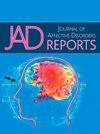Pandemic-related anxiety and screen time: A mediation analysis
Q3 Psychology
引用次数: 0
Abstract
Background
The COVID-19 pandemic brought worldwide lockdowns and social distancing, causing feelings of pandemic-related anxiety and consequentially poorer mental health and loneliness. While social isolation and poor mental health have both been previously linked to increased screen time, it is unclear if they can explain the increased screen time during the pandemic.
Objective
This study investigated whether pandemic-related anxiety is associated with increased screen time, and whether this relationship is mediated by an increase in internalizing and externalizing symptoms, as well as loneliness.
Methods
572 Canadian participants (average age 27.60) completed an online survey between June 2020 to November 2021. The survey measured pandemic-related anxiety, emotional and behavioral symptoms, and loneliness. Participants also used a mobile sensing app over two weeks to record their daily objective screen time. A structural equation model assessed the relationship of pandemic-related anxiety with general mental health and loneliness, as well as the relationship between these psychological constructs and objective daily screen time.
Results
Pandemic-related anxiety was associated with greater screen time. Externalizing symptoms and loneliness mediated the association of screen time with worries about the consequences of the pandemic, but not with worries about contracting the disease.
Conclusions
Worrying about contracting the disease is an independent risk factor in developing more concerning patterns of screen use. Additionally, worrying about the consequences of the pandemic is not an independent factor but rather is mediated by externalizing symptoms and loneliness. This has implications for conceptualizing problematic screen use and the development of intervention and prevention efforts.
流行病相关焦虑与屏幕时间:中介分析
2019冠状病毒病大流行带来了全球范围的封锁和社交距离,引发了与大流行相关的焦虑情绪,从而导致心理健康状况恶化和孤独感。虽然社会孤立和精神健康状况不佳之前都与屏幕时间的增加有关,但目前尚不清楚它们是否可以解释大流行期间屏幕时间的增加。目的研究大流行相关焦虑是否与屏幕时间增加有关,以及这种关系是否由内化和外化症状以及孤独感的增加介导。方法在2020年6月至2021年11月期间,s572名加拿大参与者(平均年龄27.60岁)完成了在线调查。该调查测量了与大流行相关的焦虑、情绪和行为症状以及孤独感。参与者还在两周内使用移动传感应用程序记录他们每天的目标屏幕时间。一个结构方程模型评估了与大流行相关的焦虑与一般心理健康和孤独感的关系,以及这些心理结构与客观的每日屏幕时间之间的关系。结果与流行病相关的焦虑与屏幕时间的增加有关。外化症状和孤独感调节了屏幕时间与对大流行后果的担忧之间的联系,但与对感染疾病的担忧无关。结论担心染病是影响筛查方式发展的独立危险因素。此外,对大流行后果的担忧不是一个独立因素,而是由外在症状和孤独感介导的。这对概念化有问题的屏幕使用以及干预和预防工作的发展具有启示意义。
本文章由计算机程序翻译,如有差异,请以英文原文为准。
求助全文
约1分钟内获得全文
求助全文
来源期刊

Journal of Affective Disorders Reports
Psychology-Clinical Psychology
CiteScore
3.80
自引率
0.00%
发文量
137
审稿时长
134 days
 求助内容:
求助内容: 应助结果提醒方式:
应助结果提醒方式:


